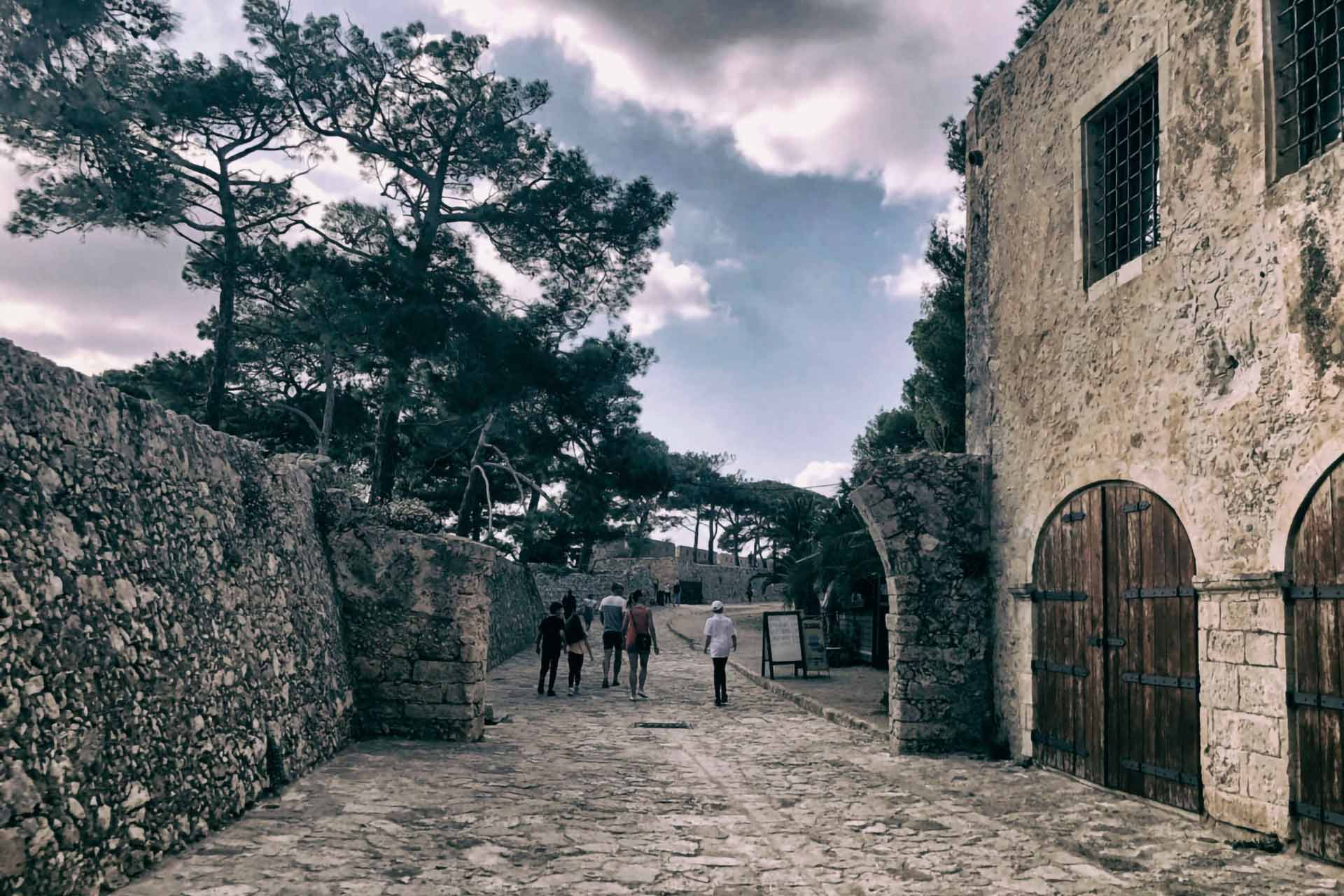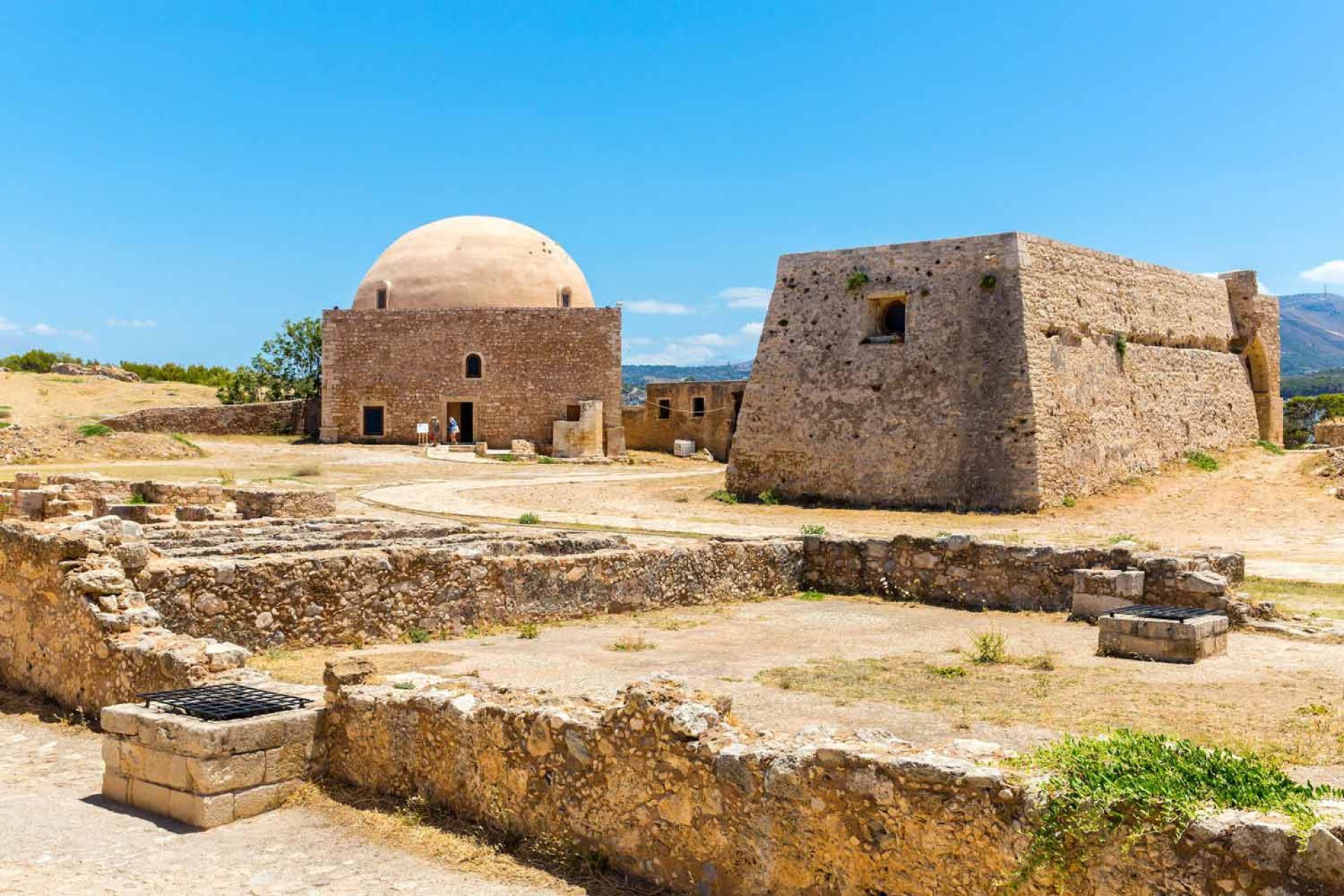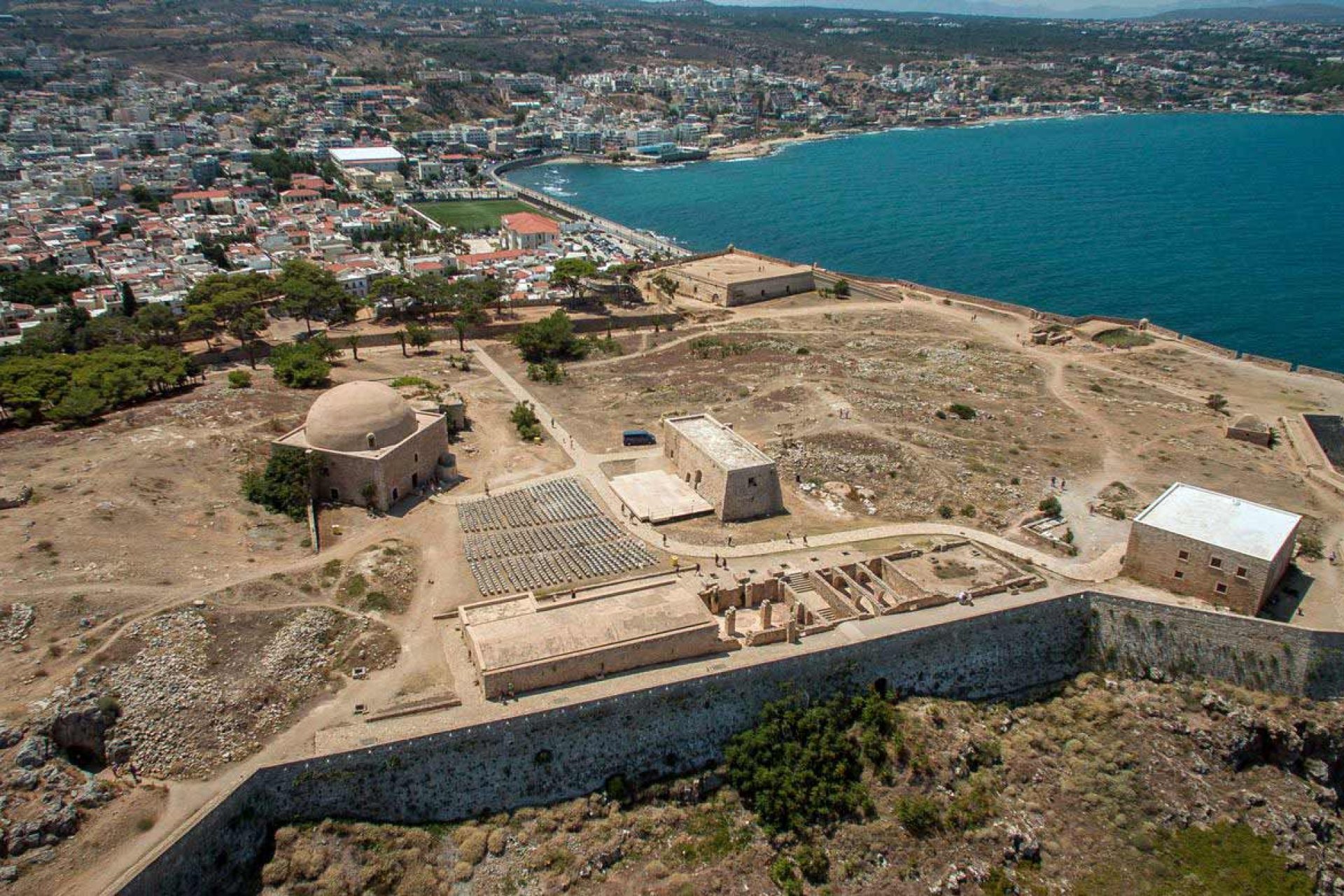Venetian Castle Fortezza
Fortezza is the castle of Rethymno, which is visible from every corner of the city. It is located on the hill of Paleokastro overlooking the entire sea. Today the fortress of Forteza is the most important monument of Rethymno, a trademark of the city. It hosts cultural events and exhibitions in its restored buildings. However, the history of this castle begins in antiquity, since excavations in the area show that the acropolis of ancient Rithymna and the temple of Rokkaia Artemis were located in this area. During the 2nd Byzantine period (10th-13th century AD) east of the Paleokastro hill, a first form of small walled settlement was formed, the Castrum Rethemi or Castel Vecchio or Antico Castello (old castle) as it was called by the Venetians later.

At the beginning of the 13th century, the Genoese pirate Pescatore, a claimant to the island and a rival of the Venetians, appears to be repairing the Byzantine fortification that surrounded the buildings of the small town and were located near the port.Castrum Rethemi was preserved even after the Venetian occupation of the island in the 13th century, but unfortunately today nothing remains of the fortification. The Venetians, as a maritime state, sought to use Rethymno as a refuge and intermediate station and for this reason new fortifications had to be built. In the 16th century, the history of the castle of Fortezza begins, which Venice tried to build for defensive reasons during the period of the Turkish occupation to deal with the Turkish threat.
Michele Sanmicheli was responsible for the construction of the walls. The project started in 1540 and finished in Argus rhythms in 1570. The Turkish pirate Uluj Ali Reis made a pirate attack which resulted in the destruction of the walls. Thus, the foundation of Fortezza began, one of the most complete fortifications created in Crete by the Venetians. The architect Sforza Pallavicini was responsible for the project, which later underwent some modifications. It took many Cretans to complete the work in 1580.
Rethymno fell to the Ottomans in 1646. During the Turkish occupation the organization of Fortezza does not seem to have undergone significant changes. But the number of houses built inside the castle increased. Until the beginning of the 20th century, the interior of Fortezza was almost completely built. However, from the first post-war years, the residents who lived in Forteza began to be transferred to other parts of Rethymno.



